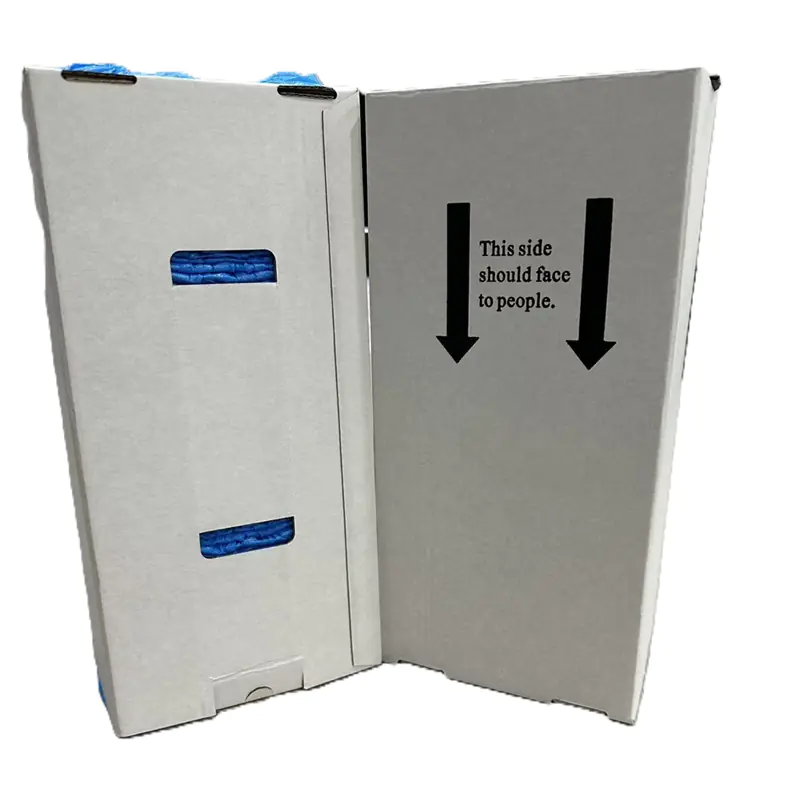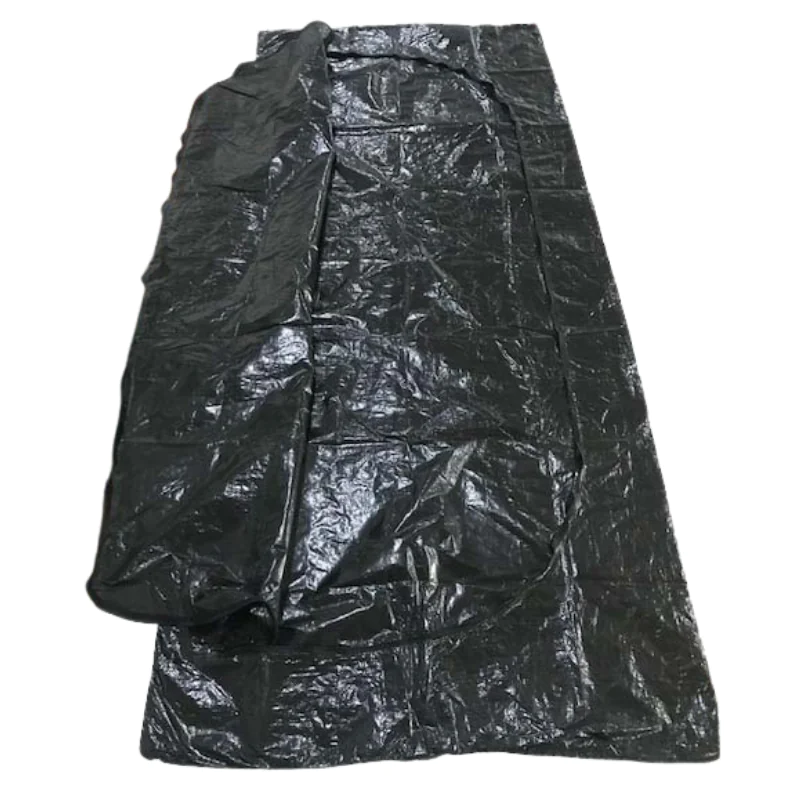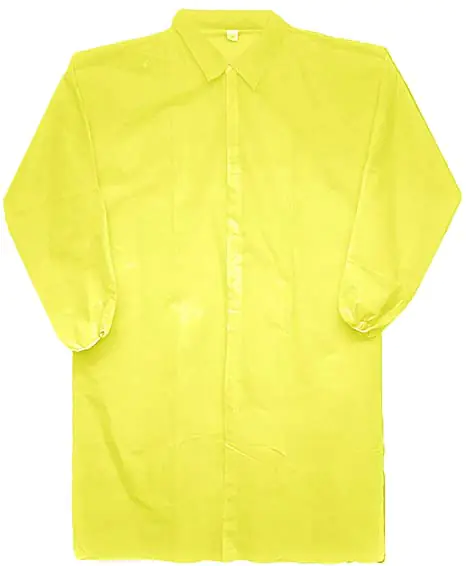Disposable aprons are simple PPE that protect clothes and skin. They help block water, oil, grease, and light chemicals. They also keep hygiene high and help avoid cross-contamination. These aprons are single use, so you wear them once and then throw them away. Common materials include PE, CPE, non woven PPet microporous film. Some styles are waterproof. Some are breathable. Many are one size fits most with neck loop et waist ties. Color options help with color coding by area or task.
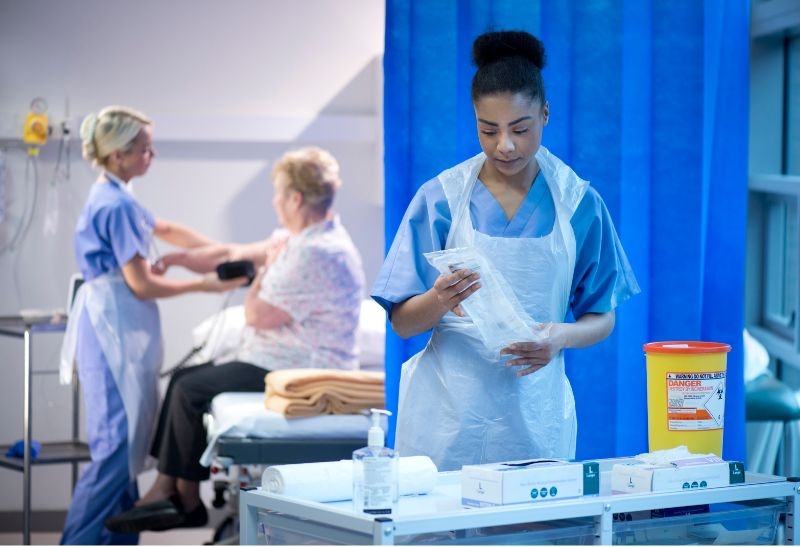
Healthcare and medical
People in hôpitaux, clinics, dental rooms, and labs use tabliers jetables every day. Nurses, techs, and aides wear them for patient care, quick procedureset cleanups. The apron puts a fluid barrier over scrubs. It helps reduce splash on the chest et belly. Dental staff use them during prophylaxis et impressions to guard from spray. Lab and pharmacy teams pick non tissé ou microporous when they want low lint and a light shield from splashes.
- For higher fluid tasks, see the Tablier jetable très épais à usage médical: https://med-disposable.com/product/disposable-extra-thick-apron-for-medical-use/
- For soft comfort with splash control, check the Tablier non tissé microporeux: https://med-disposable.com/product/microporous-non-woven-apron/

Food processing and food service
Dans le cadre de la transformation des aliments industry, tabliers jetables are a must. Workers in meat, fish, poultryet produire rooms wear PE ou CPE aprons for waterproof et oil resistant protection. Butchers, packerset quality control staff use color to separate raw et ready-to-eat zones. In restaurants, cafeteriaset catering, staff wear plastic aprons for dish work, prep, and service. They help keep uniforms dry and neat, shift after shift.
- Explore the Tablier en plastique jetable pour l'industrie alimentaire: https://med-disposable.com/product/disposable-plastic-apron-for-food-processing-industry/
- Pick a basic Tablier jetable en plastique PE for prep and dish rooms: https://med-disposable.com/product/disposable-plastic-pe-apron/
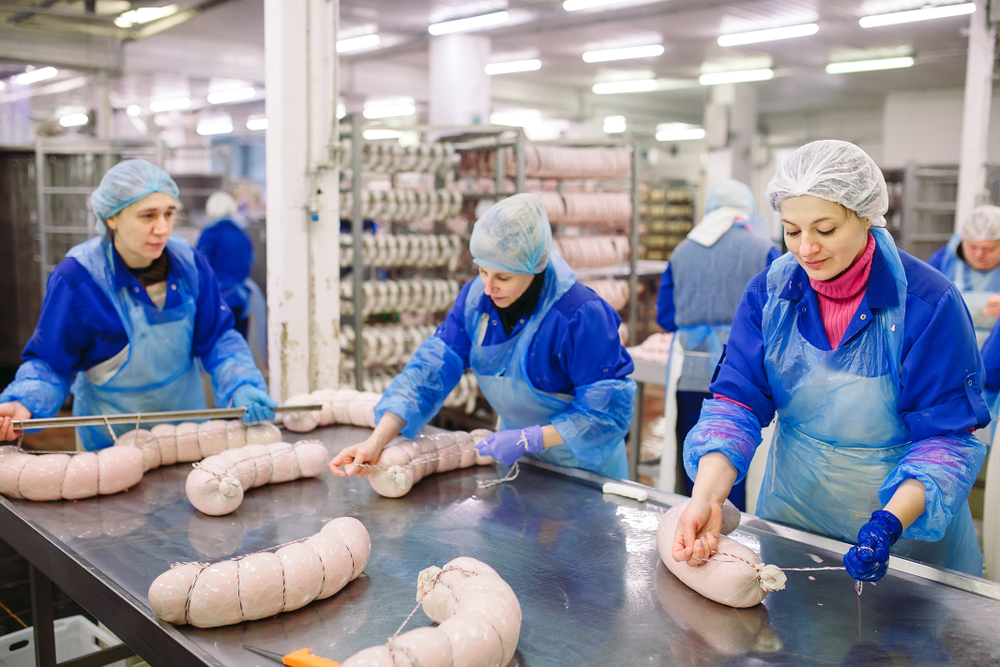
Cleaning and janitorial
Housekeeping et janitorial teams use tabliers jetables for daily tasks. In hotels, schools, and offices, aprons shield from detergents, splasheset stains. Car wash et vehicle detail crews wear CPE pour waterproof jobs. Waste handling et spill response benefit from extra thick styles. Changing the apron between rooms helps guard hygiene and stop cross-contact.
Beauty, hair, and tattoo
Hair salons, barbers, nail bars, tattoo studios, and spa sites use tabliers jetables to keep clothes clean. Hair color, bleachet chemicals can drip. A tablier en plastique is easy to put on and toss. Nail techs like a non tissé apron for soft feel and breathability. For bold rooms or brand color, a Tablier jetable en plastique coloré pour CPE is a bright pick.
- Try a Tablier jetable en plastique coloré pour CPE for easy wipe and fun colors: https://med-disposable.com/product/disposable-colorful-plastic-cpe-apron/
- Choose a Disposable non woven apron for light, breathable coverage: https://med-disposable.com/product/disposable-non-woven-apron/

Education, childcare, and elder care
Teachers et assistants use tabliers jetables during arts and crafts, meal prepet cleanups. They help keep paint, glue, and food spills off clothes. Childcare et elder care workers wear aprons for feeding, soins personnelset household chores. A non tissé style is soft on the neck and nice for long wear. A PE style is best for wet tasks and fast wipe-downs.
Industry and manufacturing
En light manufacturing, printinget assembly, tabliers jetables protect from dust, light oilset ink. Electronics et packaging teams choose low lint styles to reduce contamination. Paint shops et DIY jobs go with PE aprons for waterproof splash protection. For mixed dust and splash, a non woven with PE filmed apron blends breathability et barrier.
- See the Tablier jetable non tissé avec film PE for balanced protection: https://med-disposable.com/product/disposable-non-woven-with-pe-filmed-apron/
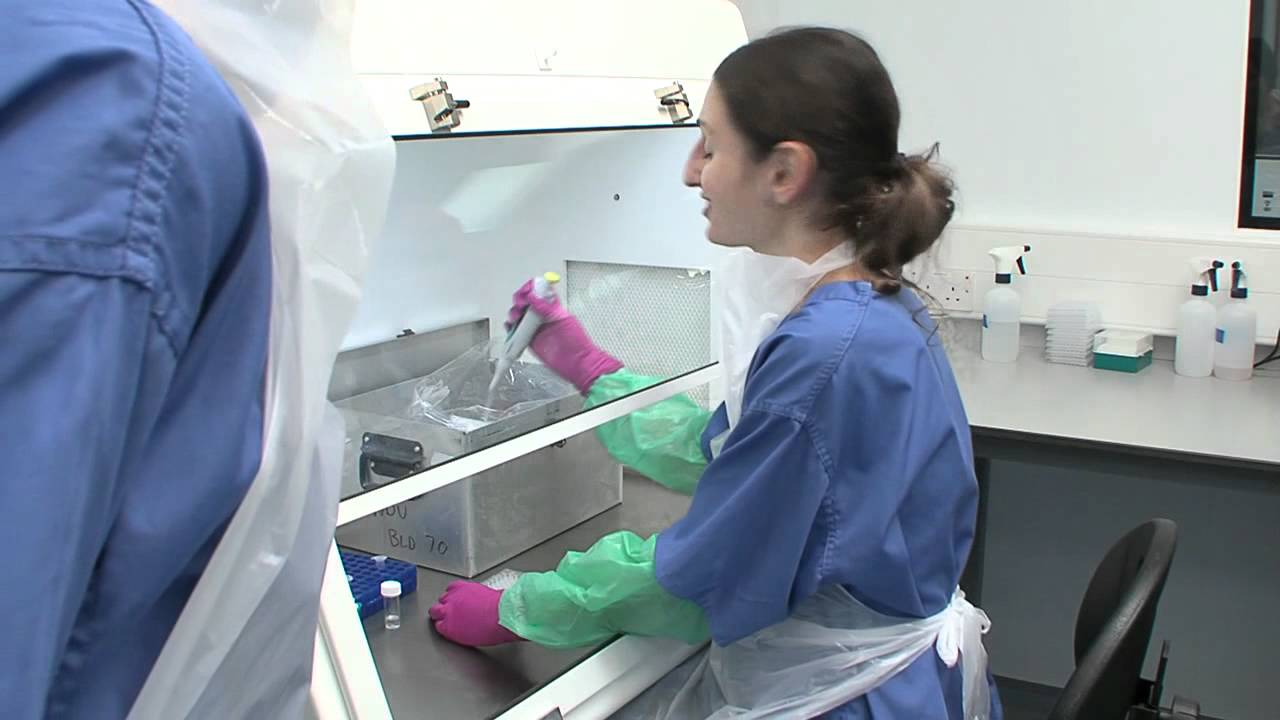
Veterinary and pet grooming
Vets et pet groomers use tabliers jetables to guard from fur, wateret pet care products. Bath time and nail time can be messy. A CPE apron keeps the chest and lap dry. Color coding helps separate treatment et grooming zones.
Home care and maintenance
Home care workers and caregivers wear tabliers jetables pour meal prep, bathing helpet cleaning. Families use them for painting, yard worket garage jobs. They are handy for barbecue, food prepet party cleanup too. Keep a small pack in the car for voyage ou camping.

Visitors and inspectors
Visitors, auditorset inspectors need a fast way to follow hygiene rules. A one time use apron is quick to don at the door. Use clear signs by entry points. Provide individually wrapped aprons or a clean dispenser box. Set couleur by area so staff can guide guests at a glance.
How to choose the right disposable apron
- Material. Choose PE ou CPE pour waterproof et oil resistant tasks. Pick non tissé for soft, breathable comfort. Use microporous film when you want breathability plus splash control.
- Thickness. Thin films are fine for light work and short time. Extra thick aprons last longer and handle heavy duty tasks.
- Length and width. Longer aprons protect the lap and knees. Wider fronts cover more of the sides. Make sure the neck loop et waist ties fit your team.
- Texture. A smooth film wipes clean fast. A light texture gives better grip when wet.
- Color coding. Use blanc, bleu, noir, or bright colors to set zones or roles. This helps audits and helps reduce cross-contamination.
- Packaging. For busy doors, pick dispenser boxes. For travel or field work, use individually packed aprons.
- A go-to option is the White/blue/black plastic aprons disposable set for multi-area color coding: https://med-disposable.com/product/white-blue-black-plastic-aprons-disposable/
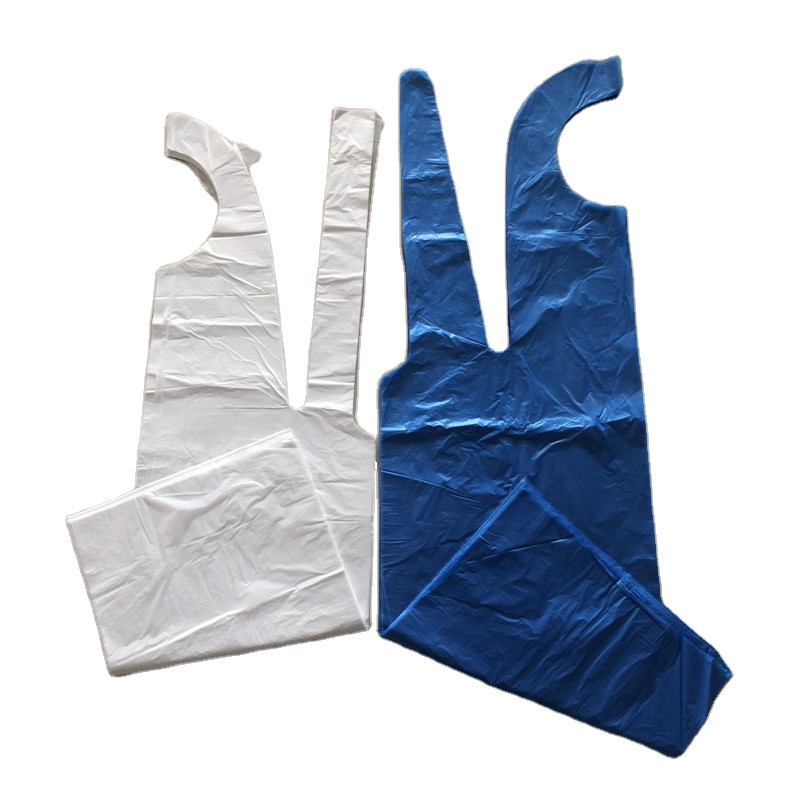
Best practices for safe, clean use
- Wash hands before you put on the apron.
- Don by placing the neck loop and tying the waist ties at the back.
- Keep the front smooth and cover your chest et belly fully.
- Change the apron when soiled, torn, or when you move to a new zone.
- Doff by breaking the ties, peeling away from the neck down, and rolling the outside in.
- Dispose in the right bin after single use.
- Pair with gloves, sleeve coverset bouchons when tasks need more PPE.

Benefits you can count on
- For wet, splashy tasks: the Tablier jetable en plastique PE is a strong, waterproof basic: https://med-disposable.com/product/disposable-plastic-pe-apron/
- For long medical tasks: the Tablier jetable très épais à usage médical adds durable fluid protection: https://med-disposable.com/product/disposable-extra-thick-apron-for-medical-use/
- For comfort-first zones: the Disposable non woven apron is soft and breathable: https://med-disposable.com/product/disposable-non-woven-apron/
- For high hygiene in clean, warm rooms: the Tablier non tissé microporeux balances barrier et airflow: https://med-disposable.com/product/microporous-non-woven-apron/
- For bright color coding on wet floors: the Tablier jetable en plastique coloré pour CPE stands out and wipes clean: https://med-disposable.com/product/disposable-colorful-plastic-cpe-apron/
Quick product picks
- Hygiene and compliance. Disposable aprons help meet daily hygiene goals across sites.
- Contamination control. They block splashes, dripset stains that can carry soil.
- Cost control. They are low cost, easy to store, and fast to hand out.
- Time savings. No washing. No repair. Just one time use and done.
- Comfort. Many choices exist: lightweight, breathableou waterproof to fit the task.
- Flexibility. Change the apron type by room, shift, or season.

The bottom line
Who uses disposable aprons? Many people do. Soins de santé et médical teams wear them for patient care et procedures. Transformation des aliments et food service staff rely on them for hygiene et waterproof work. Cleaning, janitorial, beauty, hairet tattoo teams use them to guard clothes from chemicals et stains. Education, childcare, elder care, industryet manufacturing use them to control contamination and keep tasks tidy. Visitors use them for quick, clean entry. With the right matériel, thickness, tailleet couleur, tabliers jetables are a smart, simple way to protect people, products, and places every day.



